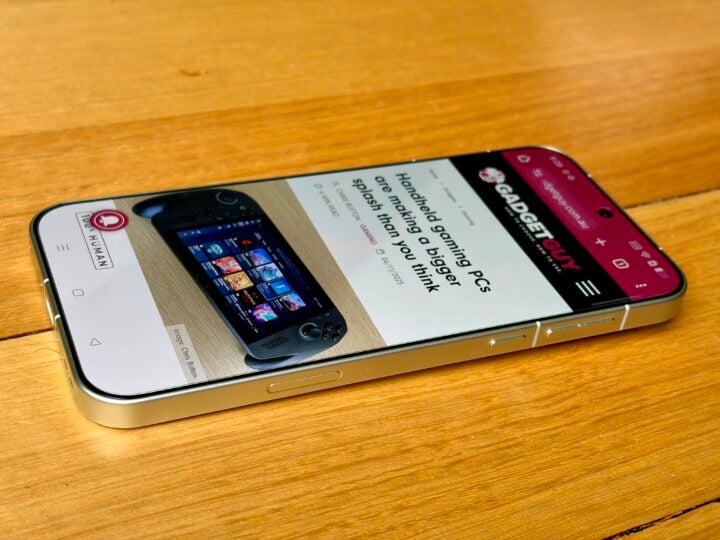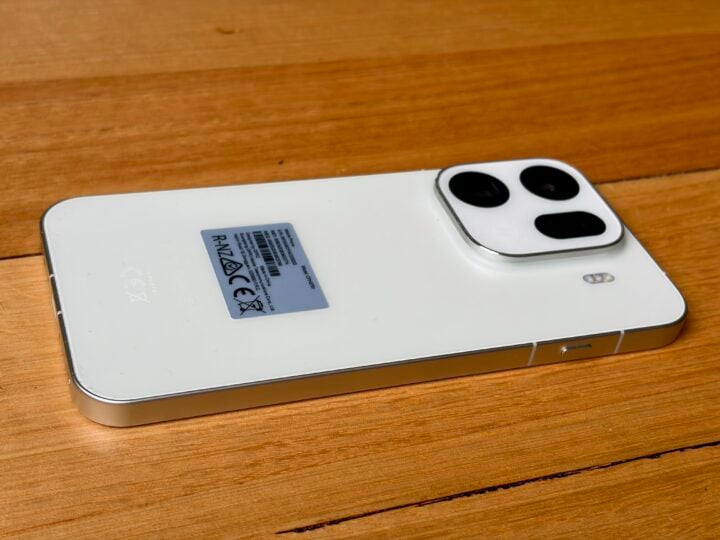Combining a shedload of grunt with a battery that just won’t quit, plus 120x Super Zoom backed by the revered Hasselblad name, the flagship Oppo Find X9 Pro is a monster that comes out swinging in the Android flagship face-off.
Between the Oppo A, Find X, Find N and Reno series, these days it seems like there’s an Oppo handset for everyone. Rather than just fight it out in the crowded Android middleweight division, Oppo is also determined to have a swing at the Android heavyweight title alongside some of the best phones from Samsung and Google.
Building on last year’s impressive Oppo Find X8 Pro, the new Oppo Find X9 Pro is betting on its photography credentials to win people over – with its new 120x Super Zoom taking the fight to the AI-enhanced Google Pixel 10 Pro‘s Pro Res Zoom 100x and Samsung Galaxy S25’s 100x Space Zoom.
The $500 price jump from last year is tough to swallow, getting up to Samsung Galaxy S25 Ultra prices, but the extreme performance and staying power ease the pain.
Table of contents
Oppo Find X9 Pro first impressions
There’s no denying the Oppo Find X9 Pro is big and heavy, standing toe-to-toe with the Samsung Galaxy S25 Ultra while dwarfing the Google Pixel 10 Pro. The styling is actually closer to an iPhone, as is Oppo’s way, reminiscent of hefty handsets like the Apple iPhone 16 Plus and Apple iPhone 17 Pro Max.
The Find X9 Pro retains the X8 Pro’s 6.78-inch display and 19.8:9 aspect ratio, to ensure it’s tall yet not too wide and cumbersome. The matte aluminium frame has lost the slightly curved edges in favour of dead straight lines that could easily be mistaken for, you guessed it, an iPhone. It doesn’t help that the review unit is Titanium Charcoal.

To help such a large handset stay balanced in your hand, the power button is more than halfway up the right-hand side, with the volume buttons above.
Unfortunately, the on-screen fingerprint reader is a little low to access comfortably with your thumb, although certainly not as low as some. I know I harp on about it, but it’s a shame more handset makers don’t build the fingerprint reader into the power button, where it’s easier to reach.
Below the power button on the right, Oppo retains the touch-sensitive Quick Button launch button added last year. A double-tap opens the camera, even when the handset is locked, and then it acts as the shutter button. This year, you can adjust the sensitivity when sliding your finger across the button to zoom.
This year, Oppo has gone all-in on its Apple homage by replacing the mute button with a customisable Action button, dubbed the “Snap” button. It replaces the old three-position Alert Slider introduced with the Oppo Find N3 Flip.
Actions for the Snap button include “Snap to Mind Space”, where AI helps you gather your thoughts and keep track of things, similar to Pixel Screenshots or the Essential Key on the Nothing Phone (3a) Pro.
Flip the handset over and you can see that the Oppo Find X9 Pro’s rear camera array has also undergone an Apple-esque overhaul, moving away from the large, distinctive circular array on the Find X8 Pro. The H for Hasselblad stamp of quality on the camera array is a lot more subtle.

The Find X9 Pro sacrifices a rear lens compared to its predecessor, but that’s not necessarily a bad thing.
The old X8 Pro packed four 50 MP sensors on the back, which included two 50 MP periscope telephoto lenses alongside the 50 MP wide and 50 MP ultra-wide.
This year, the two 50 MP periscope telephotos have been replaced with a single hefty 200 MP telephoto featuring a Samsung HP5 sensor with 3x optical zoom and Optical Image Stabilisation (handling telephoto and macro). That’s what underpins the 120x Super Zoom, which we’ll get to in a minute.
The main shooter features Sony’s newest LYT-828 camera sensor. Interestingly, there’s still a fourth lens in the form of a 2 MP Monochrome sensor. It’s not a standalone lens; instead, it’s like a depth sensor to help the other lenses capture extra fine details, similar to the Oppo Reno 13 5G.
Around the front, the selfie camera has stepped up from 32 to 50 MP. It gains autofocus but still lacks optical image stabilisation.
The handset’s photography credentials are boosted by Oppo’s partnership with Hasselblad. This includes the Hasselblad Master Camera System for accessing a wealth of manual settings, plus it supports Hasselblad colour tones and optical 135 mm portraits. The 1x wide camera mimics the bokeh effect of the Hasselblad XCD 30 mm lens.
Power up the handset and you’re faced with a bright, vivid and super-sharp 2772 × 1272 pixel AMOLED flexible display, with up to 120 Hz refresh rate for smooth scrolling.
Surprisingly, Oppo has halved the brightness, curbing it to 800 nits typical, 1800 nits High Brightness Mode. Despite this, it still offers Dolby Vision when watching Netflix, a luxury which is often lacking on HDR-capable Android handsets, along with the ability to shoot your own HDR video.
Tip the handset on its side, and it takes advantage of the earpiece to offer stereo sound, without much distortion as you crank it up.
At the bottom of the handset, you’ve got a USB-C 3.2 port, alongside a nano-SIM port and eSIM support, but no old-school headphone jack. It’s a sub-6 5G handset, with the addition of Wi-Fi 7 support.
Oppo Find X9 Pro specifications and price
| Display size | 6.78 inches, 19.8:9 aspect ratio |
| Display resolution | FHD+ 2772×1272 pixel, 450 ppi |
| Display technology | Flexible AMOLED 1.07 billion colours (10-bit) 100% DCI-P3 Brightness: 800 nits typical, 1800 nits High Brightness Mode Corning Gorilla Glass Victus 2 |
| Bands | 5G sub 6 |
| Chipset | MediaTek Dimensity 95008 core |
| GPU | Arm@Mali Drage MC12 |
| Rear cameras | Ultra-wide angle: 50MP; f/2.0; FOV 120°; 6P lens; AF supported |
| Wide angle: 50MP; f/1.5; FOV 84°; 7P lens; AF supported; OIS supported | |
| Telephoto: 200MP; f/2.1; FOV 34°; 6P lens; AF supported; OIS supported | |
| Monochrome: 2MP; f/2.4; FOV 88°; 3P lens | |
| Front camera | 50MP; f/2.0; FOV 90°; 5P lens; AF supported |
| RAM | 16 GB LPDDR5X |
| Onboard storage | 512 GB UFS 4.1 |
| microSD slot | N/A |
| SIM | NanoSIM + eSIM |
| Charging | Type-C, USB 3.2 Gen 1 80W SUPERVOOC, 80W UFCS. Compatible with: 67W and below SUPERVOOC, 44W third-party UFCS, 55W PPS, 11.7W PD50W AIRVOOC |
| Battery | 7500mAh/28.13Wh |
| Wi-Fi | Wi-Fi 7 (802.11be) Wi-Fi 2.4GHz 2 × 2 + Wi-Fi 5GHz 2 × 2 concurrent 2 × 2 MIMO |
| Bluetooth | Bluetooth 6.0, Low Energy, BLE Audio |
| Audio codecs | SBC, AAC, LDAC, aptX, aptX HD, LHDC 5.0 |
| Operating system | Android 16 running ColorOS 16 |
| Security | Fingerprint reader, Face Unlock |
| Ruggedness | IP68 rating for dust and water resistance, meaning it can be submerged in water up to 1.5-metres for 30 minutes. |
| Dimensions | 161.26 x 76.46 x 8.25mm |
| Weight | 224 gm |
| Colours | Titanium Charcoal, Silk White |
| Price | from $2299 RRP |
| Warranty | Two years |
| Official website | Oppo Australia |
Features
The Oppo Find X9 Pro runs Android 15, customised as always with Oppo’s own iOS-inspired ColorOS UI and a smattering of bloatware. As with all high-end Android handsets of late, it goes all-in on AI features and offers Google’s Gemini as the default smart assistant.
Oppo says the handset will receive five major Android OS updates and six years of security patches. That’s very good compared to many Android handsets, yet Samsung and Google are a little more generous in offering seven years with their flagships.
Under the bonnet, the Find X9 Pro packs an octa-core MediaTek Dimensity 9500, MediaTek’s tricked-out flagship powerplant taking the fight to Qualcomm’s Snapdragon range. It sticks with the AI-optimised Immortalis G925 MC12 GPU.
To keep things humming along, Oppo throws in a generous 16 GB of RAM accompanied by 512 GB of storage.
Of course, a large, sharp display and plenty of grunt take a toll on the battery, but Oppo has this more than covered with a massive 7500 mAh battery, all while keeping the handset only 8.25 mm thick.
As a result, it should easily go 36 hours before recharging, likely stretching out to beyond 48 hours if you nurse it to get you through a lost weekend.
When it’s time to fill up, the handset can take advantage of 80-watt SUPERVOOC wired charging, using the supplied bulky AC charger (a rare sight these days) to charge from flat to 50% in around 30 minutes.
You can also fast charge at 80 watts using the UFCS (Universal Fast Charging Standard) 2.0 adopted by Chinese smartphone manufacturers Huawei, Honor, Oppo and Vivo. Plus, it’s also got the benefit of fast 50W AIRVOOC wireless charging using Oppo’s optional special charger.
Quality
The GeekBench 6 benchmarks are phenomenal thanks to the latest MediaTek Dimensity silicon, scoring 3,165 on the CPU single-core test and 9,418 on multi-core, along with a GPU OpenCL score of 20,447. That leaves the Samsung Galaxy S25 Ultra and Google Pixel 10 Pro for dead, with only the Apple iPhone 17 Pro Max putting it in its place.
| Phone | CPU single-core | CPU multi-core | GPU |
| Apple iPhone 17 Pro Max | 3,768 | 9,443 | 45,451 |
| Oppo Find X9 Pro | 3,165 | 9,418 | 20,447 |
| Samsung Galaxy S25 Ultra | 2,360 | 8,911 | 14,671 |
| Apple iPhone 16e | 2,679 | 6,144 | 23,732 |
| Google Pixel 10 Pro | 2,317 | 6,455 | 3,233 |
| Xiaomi Poco F6 | 1,899 | 4,734 | 8,762 |
| Motorola Edge 60 Pro | 1,432 | 4,695 | 9,107 |
| Google Pixel 9a | 1,716 | 3,895 | 8,011 |
| Samsung Galaxy A56 | 1,364 | 3,898 | 6,539 |
| Motorola Edge 60 Fusion | 1,050 | 3,014 | 2,581 |
When you combine all that grunt with 16 GB of RAM, you’ve got an Android powerhouse that won’t disappoint if you tend to push your handsets to the limit.
Camera
When it comes to photography, the Find X9 Pro puts most Android smartphones to shame and can hold its own against Apple’s heavy hitters.
Shooting landscapes, colours look lush yet natural, without appearing overblown or over-processed. You’ve also got the advantage of Hasselblad Hi-Res Mode shots, which make the most of that 200 MP sensor.

While you’ve only got 3x optical zoom, the 200 MP sensor means you can zoom in a lot further before you see the impact of digital zoom.
Engaging the ambitious 120x Super Zoom delivers impressive results but, as with other mega zoom handsets, it’s assisted by generative AI. This means the final quality depends on the predictability of the scene.

Point 120x Super Zoom at a building site around 300 metres away (above), and it does an excellent job, even though some objects look a tad stylised. Of course, the label on the plastic container (top right) is gibberish, because generative AI tried to guess what it says.
Likewise, with a man standing around 150 metres away (below). The predictable objects around him, like bricks, are very clear, yet his face is a mess.


Meanwhile, portraits offer beautifully natural skin tones and impressive detail without resorting to the beautification trickery applied by many Android cameras. Likewise, with selfies, assisted by the addition of autofocus.

After dark, low-light performance is impressive with plenty of detail and impressive colours.
Who is the Oppo Find X9 Pro for?
If you can stomach the $500 price hike compared to the X8 Pro, the Oppo Find X9 Pro is hard to beat if you’re after an Android flagship with a strong focus on photography.
Even if you’re just chasing an Android all-rounder, the Find X9 Pro’s massive battery and loads of grunt won’t disappoint those who tend to push their phones to the limit. It’s an Android super phone, all while looking more than ever like Apple’s iPhone.








